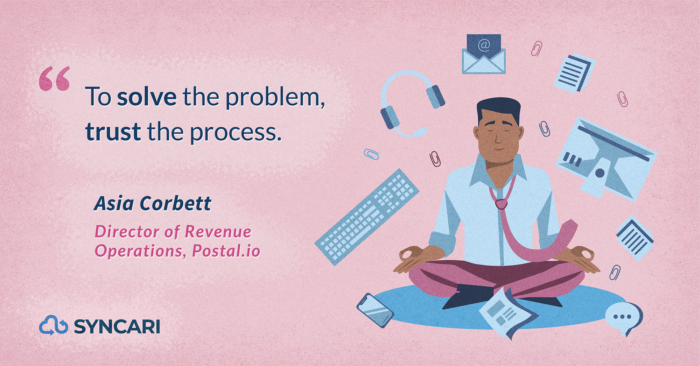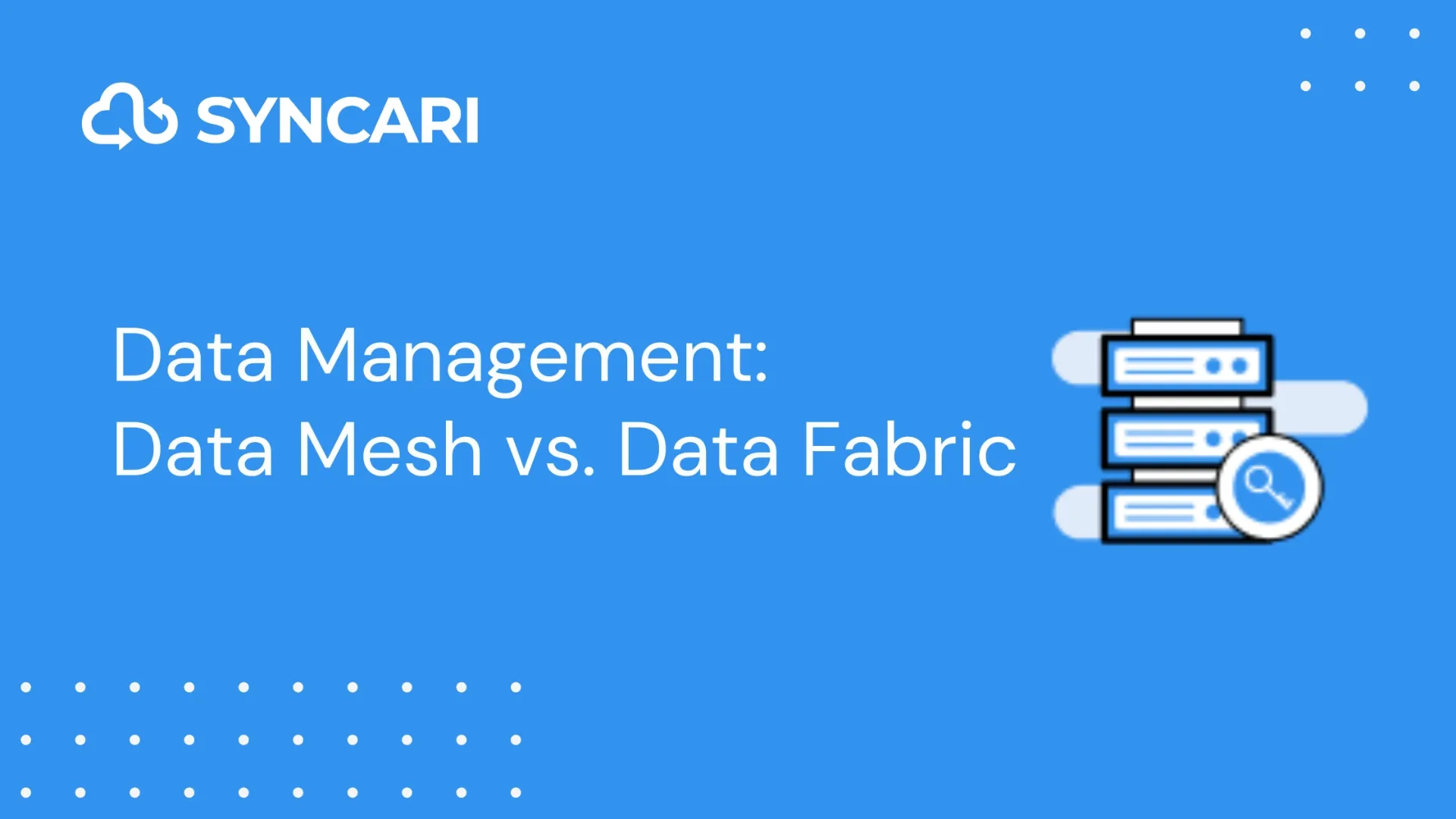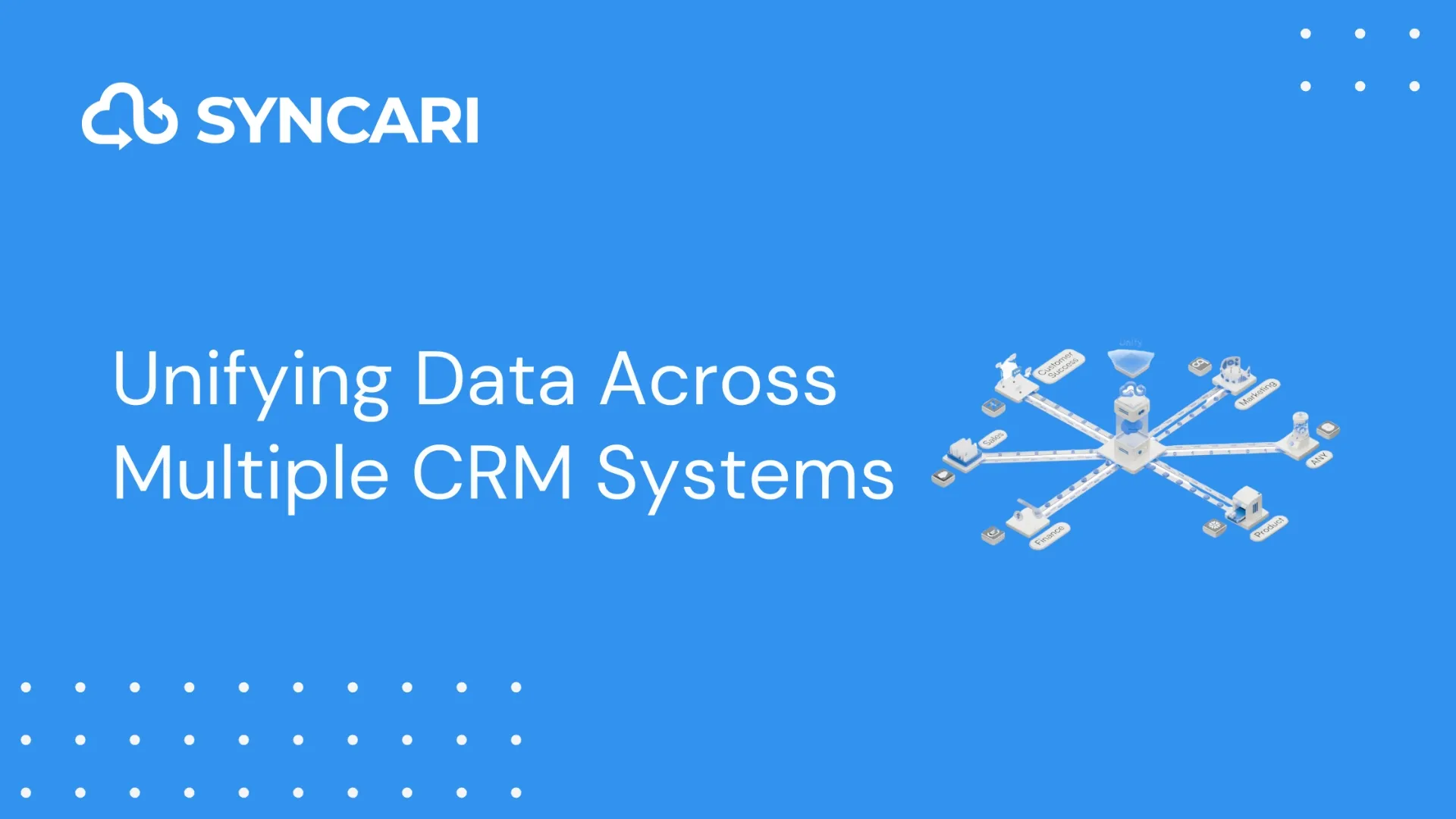Nearly everyone in go-to-market (GTM) operations has, at some point, shared this experience: You’re asked to report on data that doesn’t exist. Or isn’t possible to collect.
That data doesn’t exist of course because nobody thought to set up a system to track it. The great irony of course is that by the time you realize you want the data, you’d ideally have been tracking it for quite some time. It puts RevOps teams in a sisyphean cycle of paying down tech debt from earlier times while trying to answer persistently unanswerable questions.
That’s why I’m so excited to share the wisdom from today’s interviewee—Asia Corbett, Director of Revenue Operations at Postal.io. They’re a sending and experience platform by her own admission, early in their growth. And that means she gets to be there from the outset to build a far-sighted process so years down the line, when someone says, “Hey, can you show me …” she can reply, “Yes it’s right here.”
This interview has been lightly edited for brevity.
Nick Bonfiglio: What’s one of the most important things you’ve learned in your role?
Asia Corbett: If you’re only spending time on sales operations, you’re not planning ahead. I was initially hired to do sales operations and that’s something we discovered. There’s no addressing the part without addressing the whole. I would find information gaps. For example, where are the leads coming from? It’s so basic, but we didn’t track the lead source. And if you don’t know the lead source, you don’t know how to follow up with that person.
Another early piece for us that pushed me in the direction of RevOps was lead scoring. There was only a basic model in place. So I was like, ‘OK, well, how do we actually know these leads are qualified?” And we didn’t. So we iterated until we had more data, and now we’re able to figure out whether our original ideal customer is in fact ideal. Those were some of the things I was seeing that led me to push for focusing on the entire go-to-market organization.
Advice for others starting out in RevOps?
Focus on the process piece of revenue operations. Without a process, you cannot even get data. Case in point, our early onboarding process. We had no insight into whether a customer was going to churn or not because there was no theory or process to measure it. We could have been at risk of losing our entire customer base and not have known it.
How many GTM issues are actually process issues?
Oh my gosh. Definitely more than half. A lot of it is people not knowing the process, or how to follow it when using systems. You have someone who puts the data in, but not in the right place or format. Or they may not have data at all. Or they put in the wrong data. It’s an overly simplified example, but anywhere you have people typing information into the CRM you have the potential for process error.
Why don’t more companies focus on process?
I think it’s because people want to get straight to the reporting and the dashboards and analytics. They want their operations people to tell them what’s going on in the business. But you can’t do that until you have your sales, marketing, and success processes defined. How does marketing generate leads? How do they pass them off to sales? How do sales development reps and account executives interact or overlap? If you don’t have a written definition of what a qualified lead is, you won’t know if any of it is actually successful until way too late.
I think another reason is that addressing the process feels like pausing. It doesn’t feel like taking action, and people have a bias toward action.

What’s one question you’re trying to answer right now?
I would love to know the average time to onboarding for new customers. And on the funnel side, we have sort of a hacked-together attribution solution, and I’d love to know how many touches a deal takes from top to bottom, and where they drop off. I’d also love metrics on the support side. How many cases does each account have? How long does it take to close those? What kinds of support cases remain open? My hope is that when we move all these workflows fully into Salesforce, we’ll be able to paint a much more detailed picture of our customer health.
How would you describe your relationship with Salesforce?
Oh my gosh. Salesforce. It’s love-hate for sure. I love it for the flexibility, but there are a lot of caveats. There are a lot of challenges and limitations with integrating systems and how you can report on things. But, it is extremely flexible. I think as long as you have some best practices in place, you will get far.
What software would you say you have “a crush” on?
Haha I would say there’s a few top contenders. One is LeanData, which I’ve used before at other companies. I loved it so much I had to bring it into Postal. We’re using it for lead routing and lead-to-account matching. They have advanced object routing, which means you can route contacts, cases, opportunities, accounts, and custom objects. I’m able to build notifications for auto-sequencing right in Slack, and it’s really nice to have everything in one interface.
And the other one is Syncari, actually. I really, really, really, really, really want to get it at Postal. I think that they’re addressing a lot of pinpoints for revenue operations, general operations, sales ops, marketing ops, and anyone who has to manage a tech stack. And yeah, we’re semi-technical people, but any tool that can alleviate some of that, and you can do your building with point and click, is just … it’s amazing. I think this is the second tool that I’m going to fight to bring to Postal because I really believe in what they’re doing.
What’s one unique data insight from working at Postal?
I’d say that people are willing to share their data for a better experience. Before I came into this industry, I used to think it was kind of creepy that companies could find my information and send me something to my home address. But people have proven very open to it, and the pandemic only accelerated that. They’re willing—happy, even—to give up their data if they trust you. So, despite all this talk of not gating content, I think the data shows you can keep gating. You just have to provide a good enough incentive for people to want to give it up.
Want to keep up with Asia? Follow her on LinkedIn.


